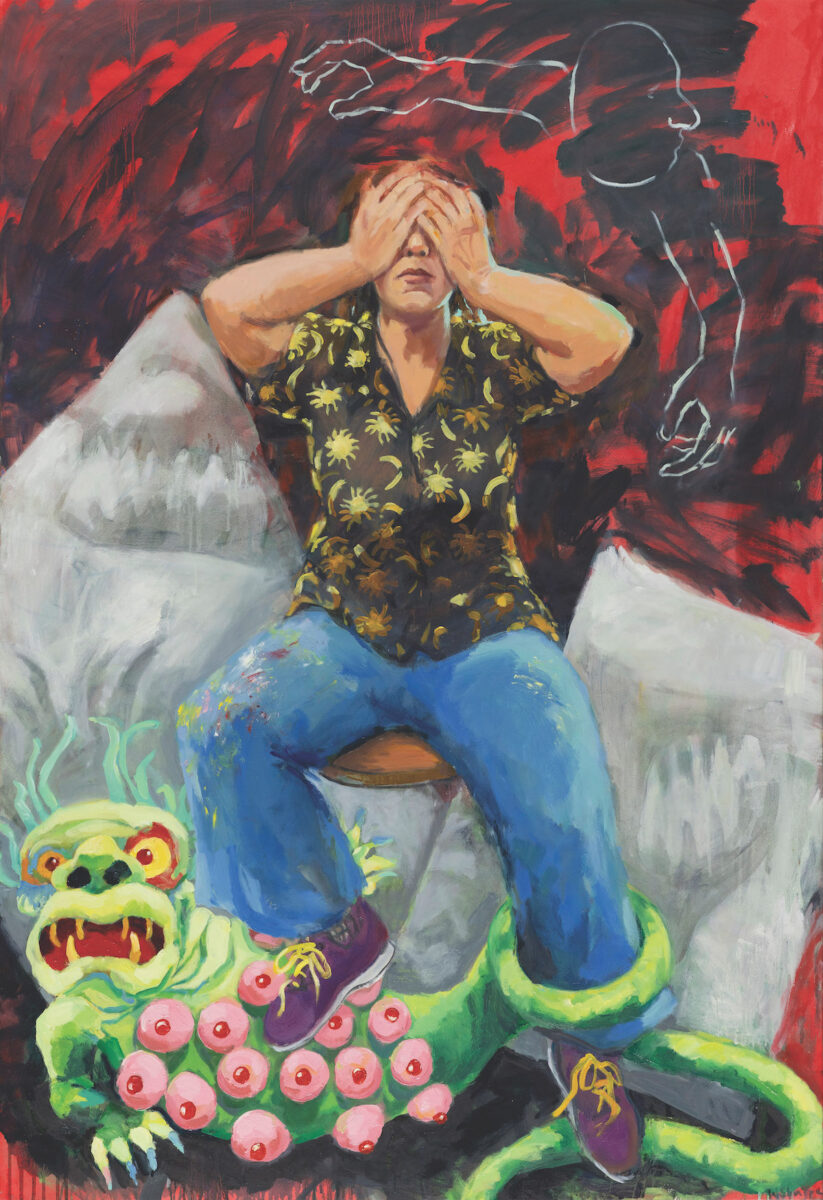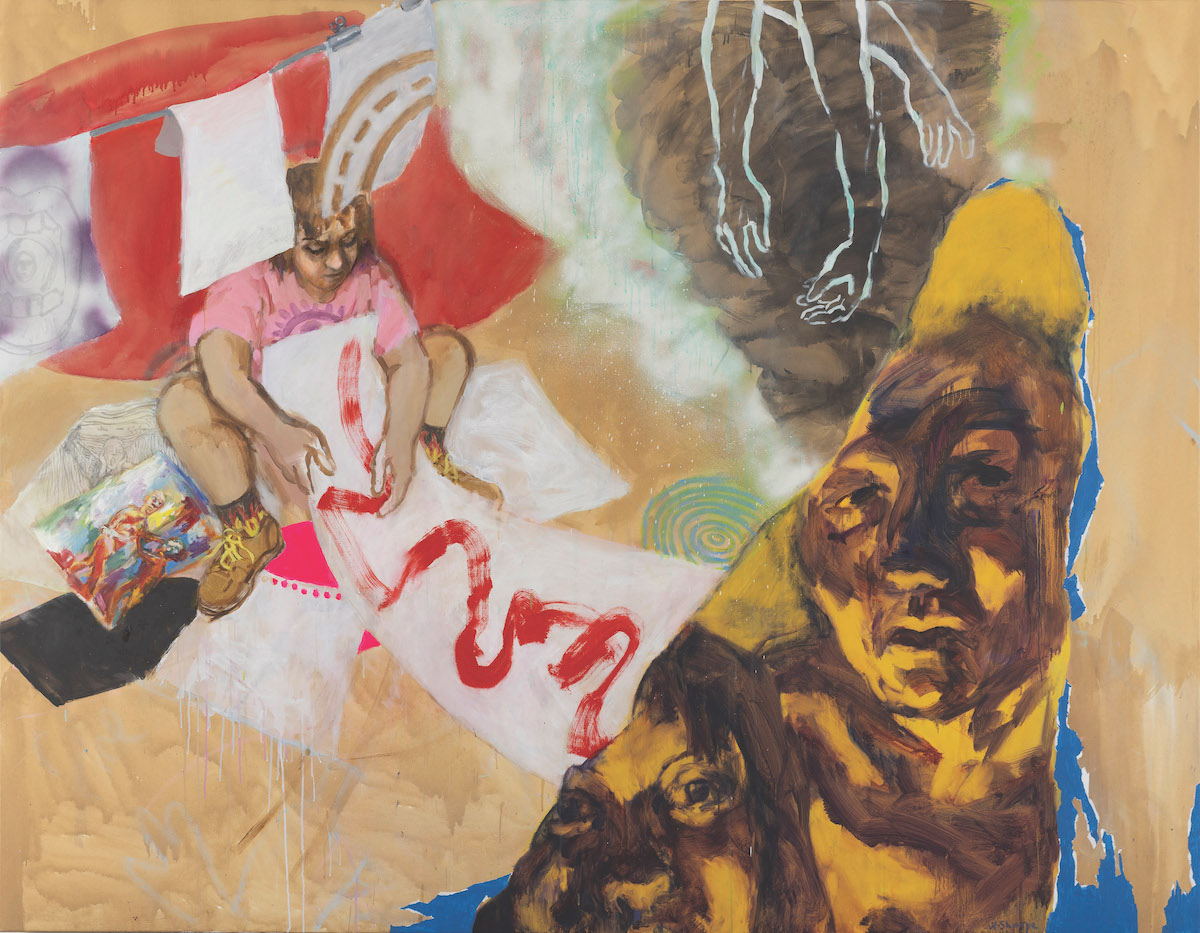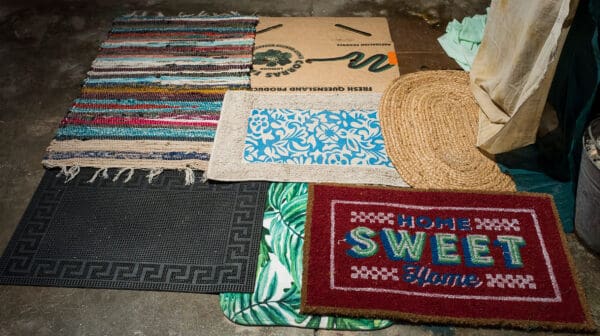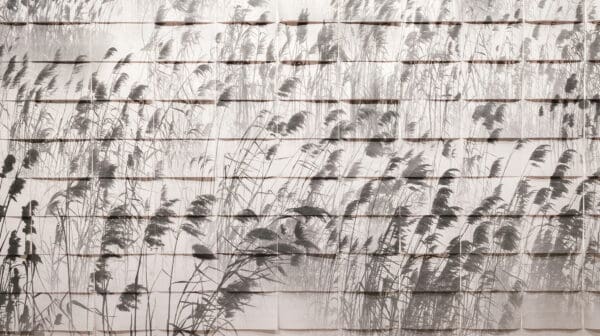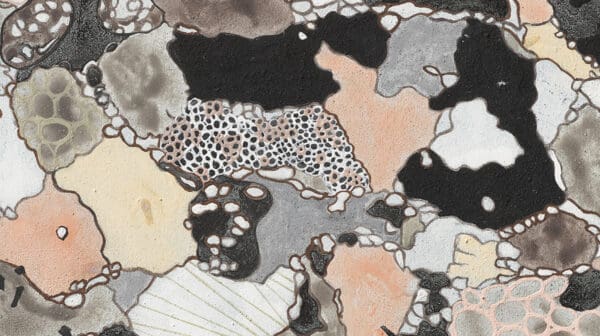With a three-decade practice, Wendy Sharpe has won the Archibald Prize, Sulman Prize and Portia Geach Memorial Award, and was the first woman appointed an official war artist by the Australian War Memorial. Her expressive paintings and expansive murals incorporate social criticism—from domestic violence to the rights of asylum seekers—and otherworldly dreamscapes, blending the real and imagined.
Her latest exhibition at the Art Gallery of New South Wales, Wendy Sharpe: Spellbound, features new large-scale paintings, as well as drawings, ceramics, site-specific wall murals, and a recreation of her Sydney studio. Ahead of the show, and a new mural at Rockhampton Museum of Art, Sharpe talks about working abroad, why she’s not a portrait artist, and that iconic painting of Magda Szubanski.
Sally Gearon: Spellbound is described as “a sumptuous aesthetic journey into the nature of creativity”. What is your creative process like? How does a work get made?
Wendy Sharpe: Well, works always come from other work. The most common question I get asked is, “How long did it take?” First, it’s irrelevant, because I’m working on several things at the same time. But also, you never really know where that work started. You can find its ancestry in a painting from two years ago, a painting from 20 years ago, and in my case maybe even a painting from 30 years ago. It isn’t the same, but you can see that there are some ideas that you were looking at then that are still present in recent work. They have no real beginning or end.
SG: You live and work between Sydney and Paris, and have travelled extensively throughout your career. How much does location inform your work?
WS: I guess there’s two things. There’s the work that I make which comes from my own imagination. It’s internal, it just comes from me. With that sort of work, I could be anywhere. I’ve had residencies in Antarctica, China and Mexico. And recently I was in Ethiopia working with the Catherine Hamlin Fistula Foundation, a women’s health charity. So, when I’m doing those sorts of residencies, to me it would be illogical not to be making work about being there.
With Paris, because I spend so much time there, I can be doing other work as well as work that is specifically about Paris. But I think that if you are going to spend a few months on a residency it often makes sense to make work about that place. There is something very exciting about being somewhere different and seeing things that you can’t see here, and stepping out of your normal life. It refreshes you.
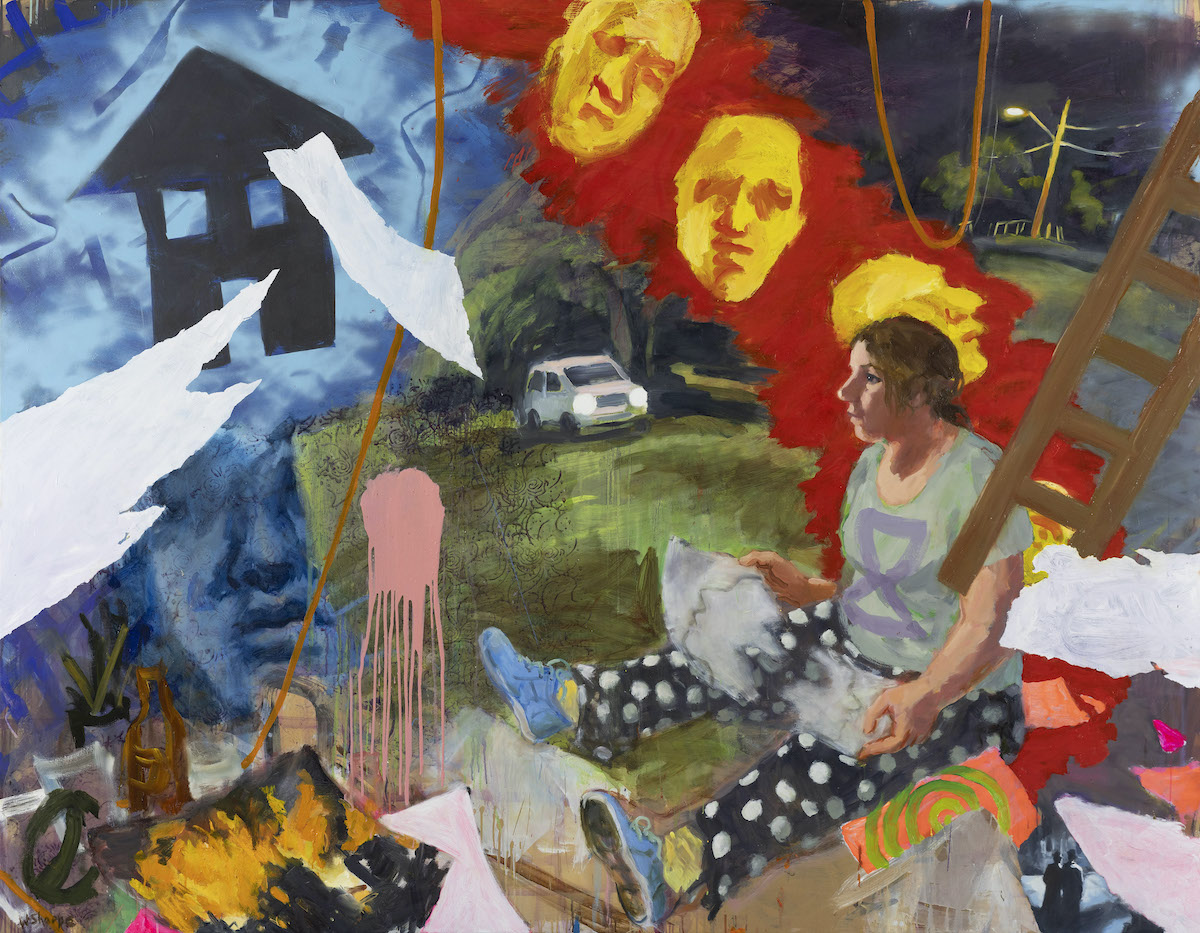
SG: You’ve said before that you’re interested in juxtaposing the real with the imagined. How do these elements come together? Is it an intuitive process?
WS: It’s an intuitive process, but it’s also what I mentioned earlier, about things sometimes having early ancestors. I can think of a painting, for example, that I did in the 90s. It’s a painting of me with imagined swirling figures. They are swirling around and I’m trying to see them before they swirl off so that I can draw them. What I was making work about during that time, which absolutely relates to this exhibition, was the artist as a magician, imagining thoughts and ideas that are intangible, but made visible and physical by the artist. She might be in a commonplace situation, like a studio, wearing ordinary clothes, but she is communing with her own imagination.
SG: Does the process change if you’re painting a portrait or a mural?
WS: Well, even though I’ve won the Archibald, and I’ve been in it many times, I’m not a portrait painter. The idea of painting commissioned portraits always gives me a chill. When I paint, I don’t always use models, I often come up with an idea and I’ll make it up entirely.
If it is an actual portrait that is supposed to be a particular person, I will work out what I want to say about them. I will do studies first, sometimes small paintings, or just a couple of quick sketches. And then when I start the actual painting, it is never a straightforward journey of copying something. I don’t know exactly what it’s going to look like until I start.
SG: The best portraits aren’t necessarily just straight representation, there needs to be something else going on.
“She might be in a commonplace situation, like a studio, wearing ordinary clothes, but she is communing with her own imagination.”
WS: I don’t always work from life, but I am interested in people, and I’m interested in stories. Can I tell you about when I painted Magda [Szubanski]? I really admire Magda; I think she’s a wonderful person. While she’s primarily known as a comedian, she can also be very dark, intense, and brilliantly intelligent. She came around to the studio, and through talking to her I came up with an idea that I really liked. At first, I didn’t want to paint her as Sharon [the character Szubanski plays on Kath & Kim]. But Sharon has always had a sad side to her—so I put her in complete trauma. She’s standing there, and behind her is a terrifying disaster of burning buildings. I wanted it to be that when you looked at it, you were unsure if this terrible flaming disaster is real or imagined. But whatever it is, it’s real enough for the reflection of the red to touch the edge of her body. I was trying to talk about being a comedian, but also just being a human. Even when something awful is happening, you have to continue on.
When I had that painting of Magda in the Archibald, some art gallery guide was taking people around and telling them that the flaming buildings were to do with the bushfires. And although that wasn’t what I had in mind—I was thinking of the Second World War—the bushfire story works because it’s about something terrible happening and having to keep carrying on. So, in a way, although that wasn’t what I had in mind, it’s still true.
It’s the same with my paintings in Spellbound. People generally don’t like things being left up to their own imagination. They don’t trust it. But everyone has imagination, even people who say they don’t. And there are many possibilities as to what a work means, but it’s up to you to decide what it is to you.
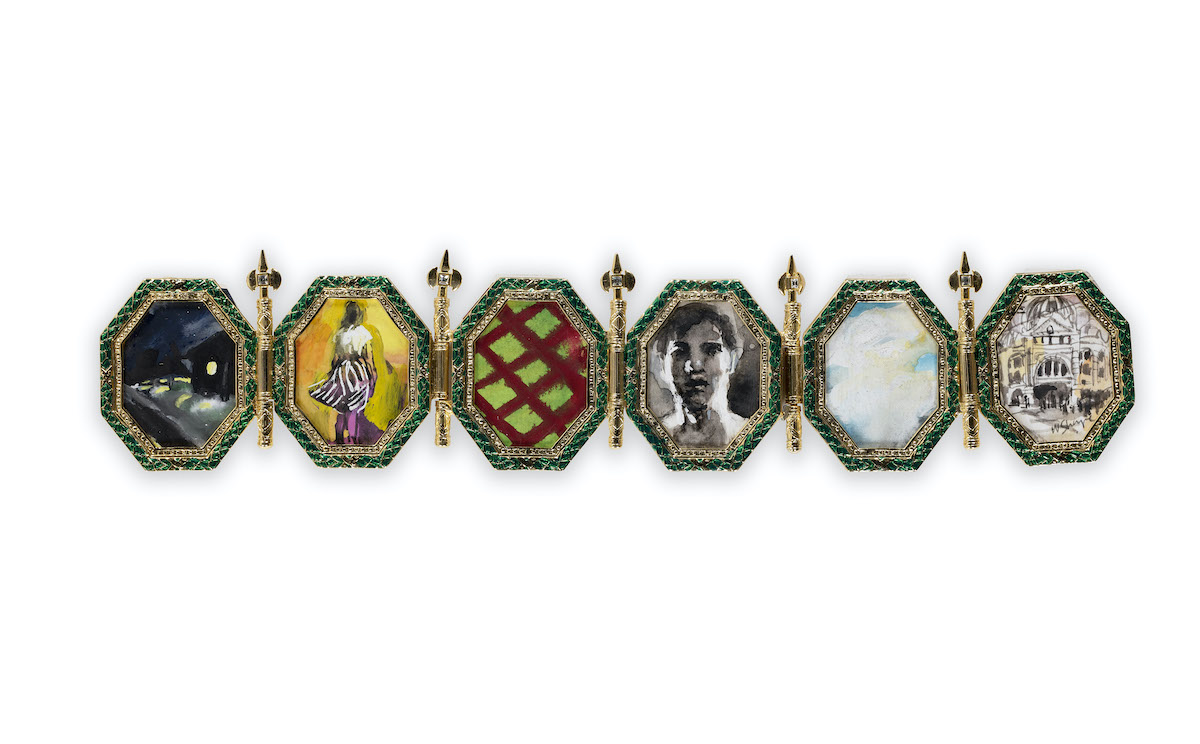
SG: Is there a particular work in Spellbound that means a lot to you?
WS: I’ve got three very large paintings that I’ve just done for this show. They are strange, mysterious paintings of someone—it’s me, doesn’t necessarily look like me though. She is an artist, and she is surrounded by all her imagined worlds. I’m really pleased with those.
The other that I’m pleased with is a self-portrait. I’m sitting on a stool, and I’ve got my hands over my eyes and at my feet is a green, wiggly, cartoony, strange monster. And the monster has lots of pink bosoms, which look like cupcakes with red cherries on top. It was inspired by a quote from an artist called Sandro Chia, which I used in my thesis that I did 30 years ago and still love: “Art is a monster. You don’t know where it comes from or indeed where it is exactly, but as an artist you have the responsibility of entering the labyrinth and bringing back its head.”
And doesn’t that apply to every creative thing? You don’t know where it is exactly. You have a good idea what you’re going to paint, but you don’t know. But as soon as you start on the journey of working, it is like a labyrinth. And when you find your way through, you find what it is, and you bring back his head.
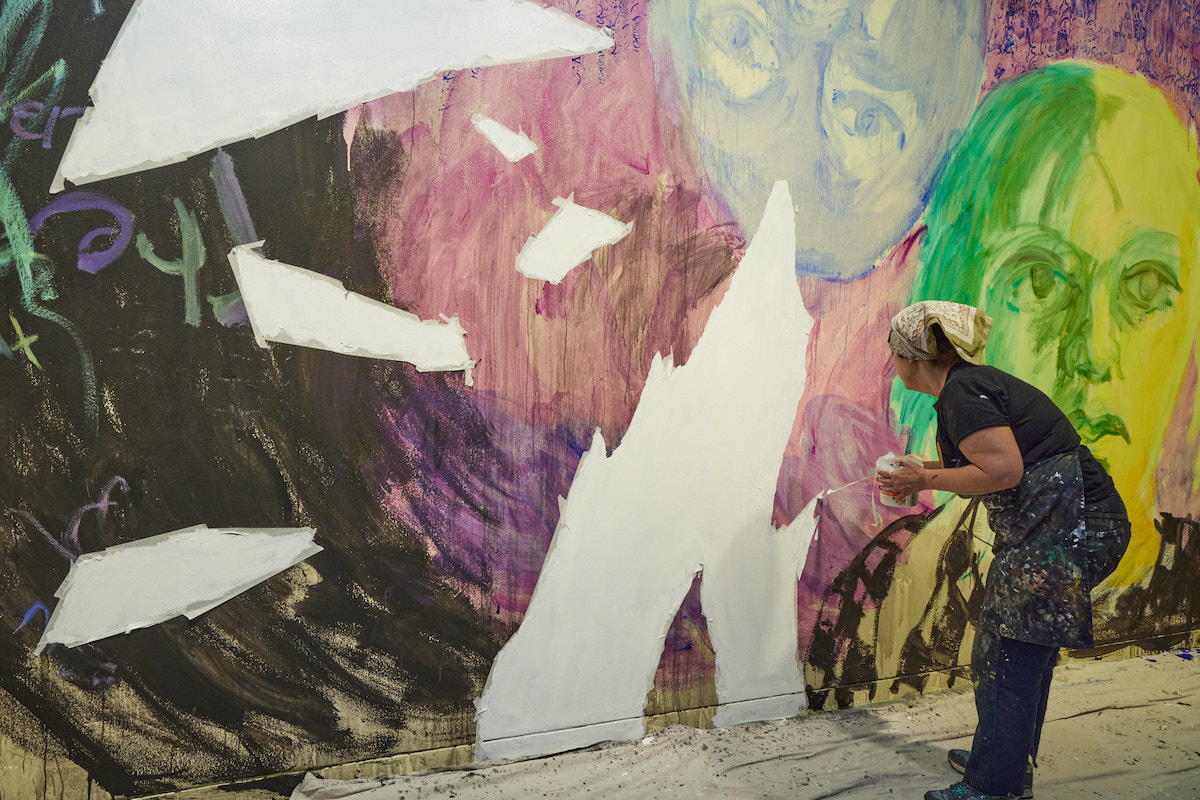
SG: What can you tell me about the mural you’re creating for Rockhampton Museum of Art (RMOA)?
WS: I won The Gold Award in 2022 [via RMOA], so they asked if I would paint something in the foyer. I’m going to paint an image—it’s of me, really. I’m just standing there, and I’m surrounded by floating figures. Are they real? Are they ghosts? Are they imagined? Are they ancestors? Are they figments of my imagination? They’re probably all those things.
I’m hoping that it will encourage people to think about what images they might use if they were doing it. What [the figures] would be to them, whether it’s some ancestor or whether it’s some invented future, who knows. You might be walking down the road to the supermarket doing something quite banal, but in your head, there is this other world of daydreaming and imagination.
Wendy Sharpe
Philip Bacon Galleries
27 May – 21 June 2025
This article was originally published in the July/August 2024 print edition of Art Guide Australia.





